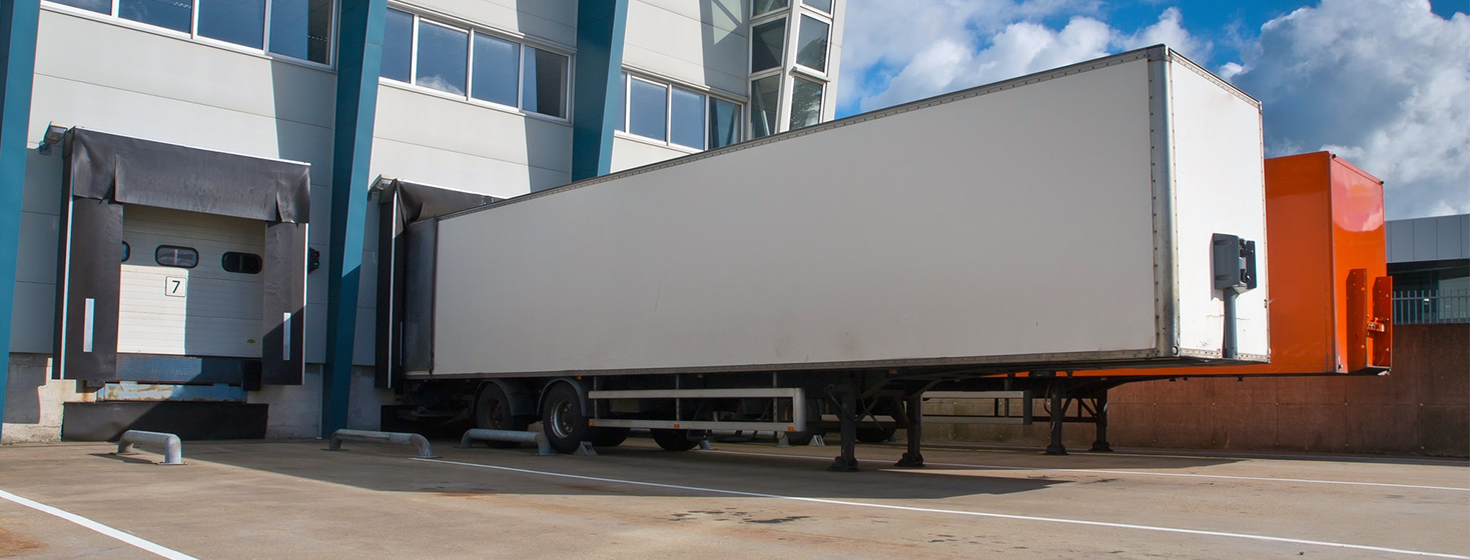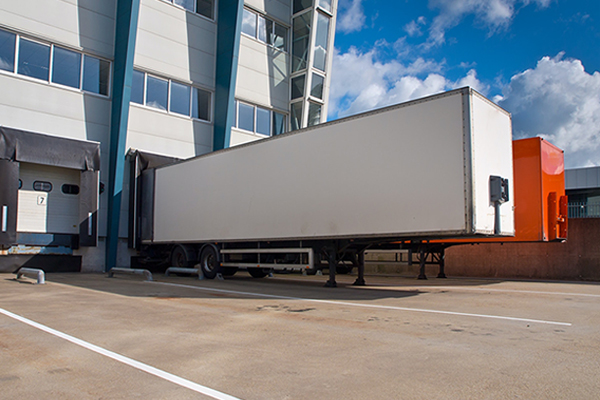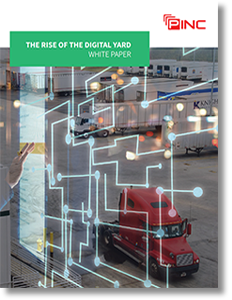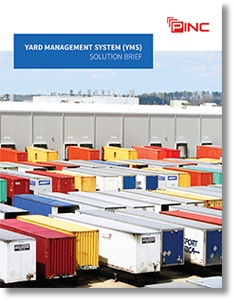The Increasing Demand for Digital Yard Management Systems
Why has the need for Digital Yard Management Systems surged during the Coronavirus COVID-19 supply chain disruptions?


Digital Yard Management Systems
Digital Yard Management Systems (YMS) play a critical role in helping companies automate processes and offset the impacts of the global pandemic and other supply chain disruptions.
It didn’t take long for global supply chains to take center stage during the worldwide pandemic, with the many shipping delays, supply disruptions, and related issues that made the world’s headlines.
As a critical juncture that sits between the warehouses where goods are stored and the end destination for those supplies, the yard quickly became a focal point for companies that scrambled to develop more streamlined, frictionless supply chain strategies.
Some of the world’s largest brands would agree that yards are the most significant opportunities for digitization and optimization in the supply chain.
As inventory often goes through multiple yards during their shipment lifecycle, any inefficiencies or errors in the yard are propagated through the entire supply chain.
Additionally, 80% of transportation delays happen when trailers and containers are at warehouses, distribution centers, and manufacturing plants, costing organizations millions of dollars in inefficient operations, and excessive accessorial charges and transportation contracts.
Driving Greater Yard Efficiency
To drive greater efficiency for the yard and better collaboration with carriers, vendors are focusing more on yard orchestrated automation capabilities as part of their offerings. “Companies have put considerable effort into optimizing their processes in the warehouse and transportation,” Gartner analysts Bart De Muynck and Simon Tunstall point out in the new Gartner Market Guide for Yard Management (subscription required).
“However, operations in the yard that connect transportation and, specifically, the truck to the warehouse, for both inbound and outbound operations, have in many cases been left behind or ignored. Often, the yard operations operate in a very manual and non-technology-driven way. The need for more automation and digitization caused by the recent disruptions and concerns around social distancing has created more visibility of the gaps that exist in many yard operations.”
The 2020 Market Guide for Yard Management says “shorter transportation lead times and increasing transportation costs push companies to increase their efficiencies in the yard, as time spent on a yard can be unproductive and costly.
More regulated hours of service and an increasing driver shortage have a negative impact on the total number of hours trucks are on the road at any given point.
Consequently, it becomes even more critical for shippers to find time savings elsewhere in their supply chains. Boosting throughput by using a YMS means trucks spend more minutes with their wheels turning.”
Talking Enterprise Yard Logistics
According to a research study Talking Logistics’ analyst Adrian Gonzalez recently conducted and that will be published soon, industry-leading companies “recognize that having digital yard management capabilities provides a range of business benefits beyond the yard.”
In a recent article, Gonzalez validates his statement with a comment made by one of the research respondents, “Yard management is incredibly important and often overlooked. Benefits include improved warehouse efficiency (e.g., labor/scheduling), improved customer service, reduced inventory, and reduced transportation costs (linehaul, detention, etc.).”
Gonzalez also notes in the article that “according to Logistics Management’s most recent Technology Usage Study, only 8% of companies are currently using a yard management system (YMS).”
He finished his thoughts with a very thought-provoking question “Why the low implementation rate?” and commented;
“for some companies, their yard operations haven’t reached a critical level of complexity and shipping/receiving volume to justify an investment in a YMS. For many more companies, however, the reason is due to an outdated and limited view of the business benefits a YMS provides beyond the four fences of a yard.”
Gartner analysts Simon Tunstall and Bart de Muynck saw an increase in yard management inquiries from clients in 2020, and according to the Gartner analysts “companies are looking into YMS solutions to help close the supply chain gaps that exist in their own backyards such as long trailer wait times, unproductive personnel numbers, poorly synchronized movement of goods and ineffective dock planning.”
Closing the Gaps
Based on our customer data, here is how shippers have been closing those gaps and delivering value across the network:
- Finding and assigning trailer assets and associated loads automatically through their life cycle, and optimizing their movement between gates, yard, and docks.
- Minimizing the operational footprint (people and assets) required to operate the facility effectively.
- Improving sustainability by reducing truck idling time, eliminating excessive reefer trailer and yard spotters fuel consumption, reducing empty miles, and eliminating paper from operations.
- Supporting the management of transportation contracts and accessorial charges from a site and enterprise level.
- Optimizing driver turnaround times while becoming a Shipper-of-Choice.
- Taking advantage of all available real-time data exchanges between the RTTVPs, TMSs, and other transportation system data sources.
- Enhancing operational capabilities and providing contactless functionalities to promote social distancing during the COVID-19 pandemic.
About the Author
Rafael Granato is Vice President of Marketing at PINC.
Gartner, Market Guide For Yard Management, Simon Tunstall, Bart De Muynck, 25 June 2020.
Gartner Disclaimer
Gartner does not endorse any vendor, product, or service depicted in its research publications, and does not advise technology users to select only those vendors with the highest ratings or other designation. Gartner research publications consist of the opinions of Gartner’s Research & Advisory organization and should not be construed as statements of fact. Gartner disclaims all warranties, expressed or implied, with respect to this research, including any warranties of merchantability or fitness for a particular purpose.
Related Article: Keeping Your Inventory Moving During the COVID-19 Pandemic
Related Resources
PINC Yard Management Systems: 4 Case Studies
In these 4 Yard Management System case studies, we detail how Pactiv, Batory Foods, Cost Plus World Market, and East Coast Warehouse & Distribution Corp. implemented PINC's Yard Management solutions to increase productivity, reduce expenses, eliminated trailer detention fees, and maintain control and visibility over yard operations, and more. Download Now!
The Rise of the Digital Yard
In this white paper, we explore the rise of the digital yard and show how technology is enabling significant efficiencies, productivity gains, and cost containment in a world where every penny added to the bottom line positively impacts organizational success. Download Now!
Solution Brief: Yard Management System
Yards are the intersection between warehouses and transportation, they are a critical linkage in logistics management practices and have a significant impact on the overall efficiency of the supply chain. Download Now!
More PINC Resources

Article Topics
Latest in Materials Handling
RoboGeorgia launches to make Georgia a leading robotics and automation hub Vehicle-mounted computers: Beyond rugged New packaging idea for the cold chain Autonomous mobile robots (AMRs) offer modern solution to challenges of traditional farming Hyster-Yale Group provides students with real-world AI experience in 2024 Kellogg Design Challenge KION Group’s board extends CEO Rob Smith’s contract by five years UniCarriers Forklift joins Quality Equipment in opening celebration of new location More Materials HandlingSubscribe to Materials Handling Magazine

Find out what the world's most innovative companies are doing to improve productivity in their plants and distribution centers.
Start your FREE subscription today.
April 2024 Modern Materials Handling

Latest Resources















